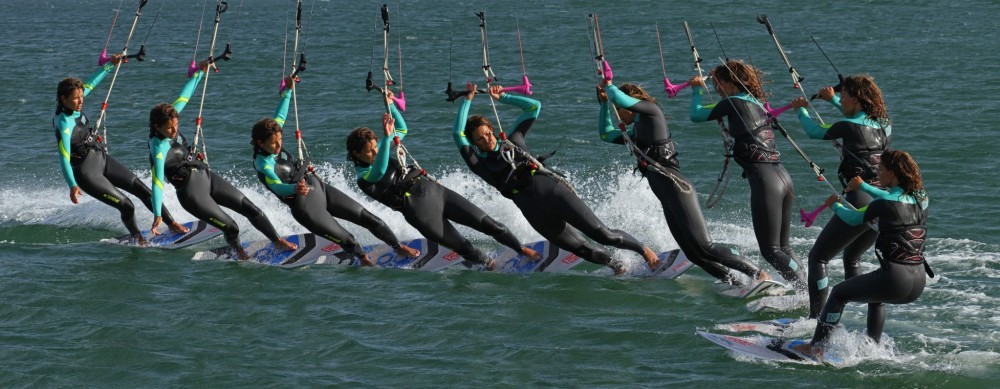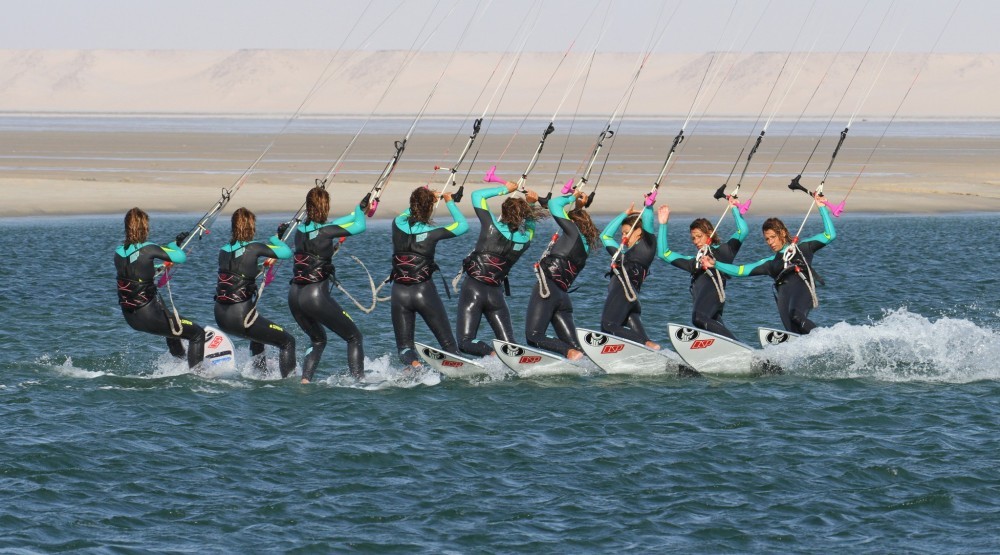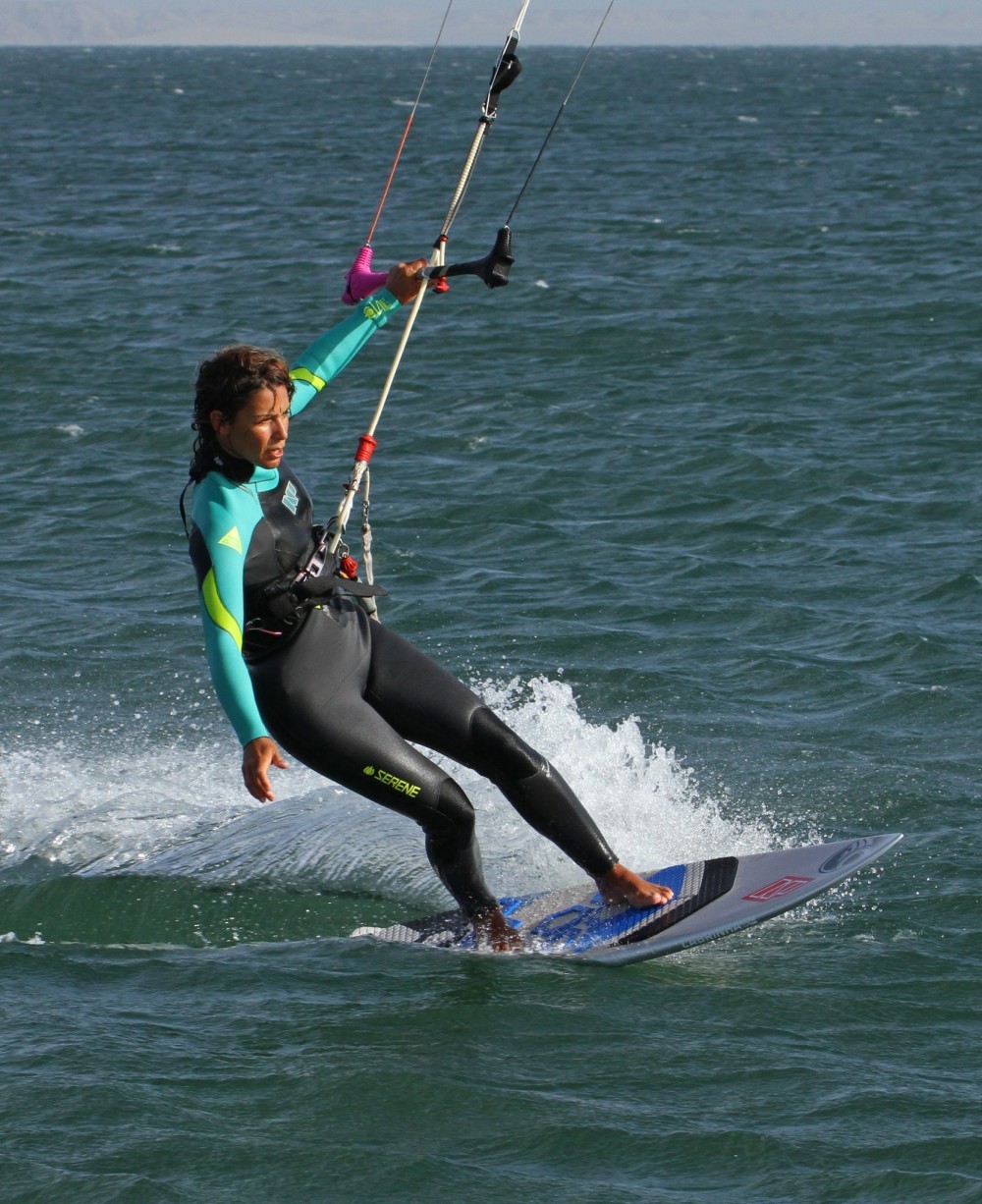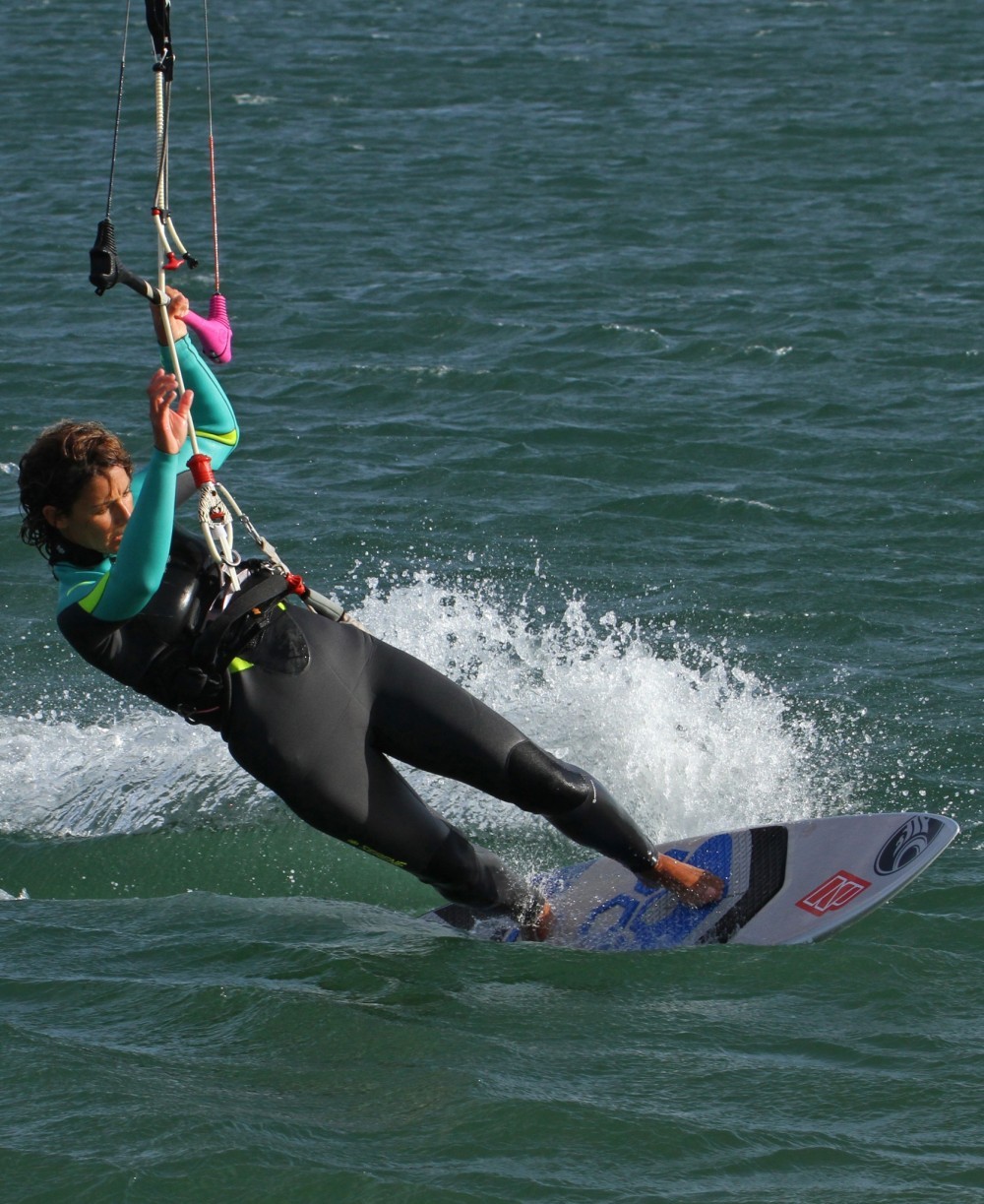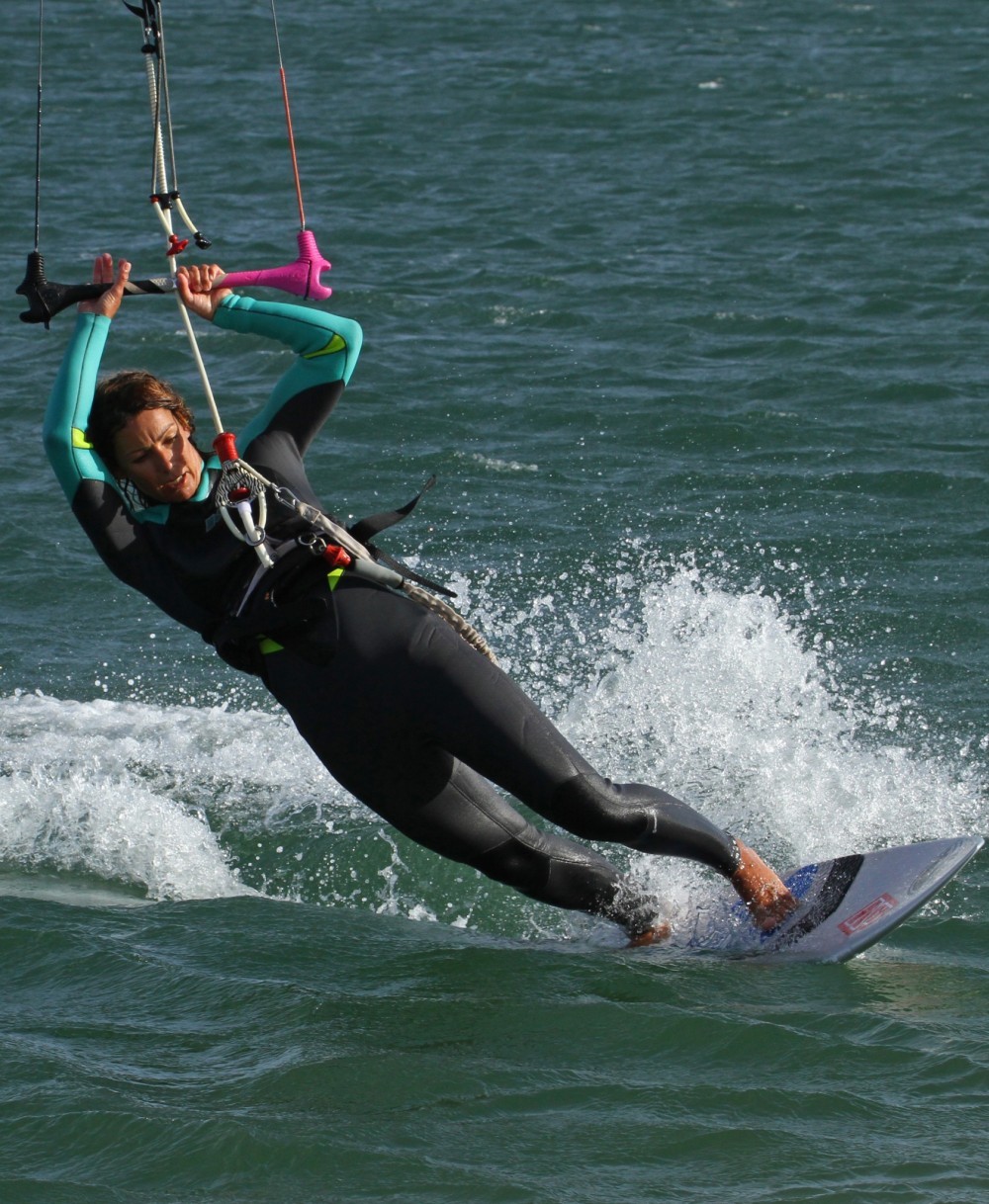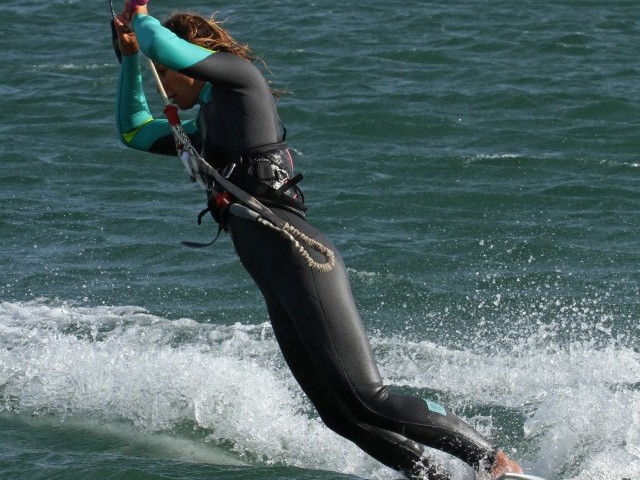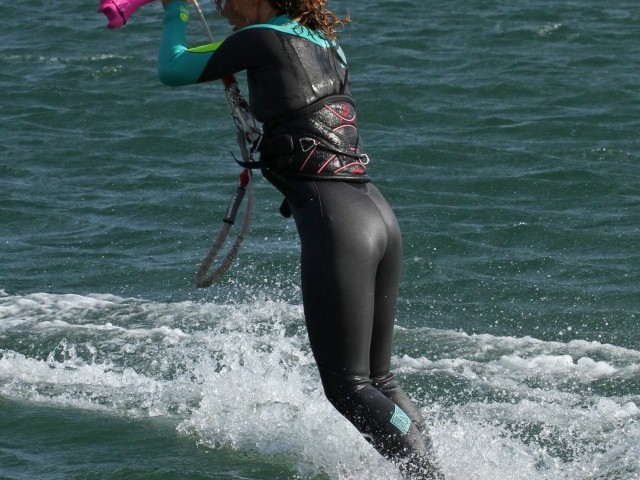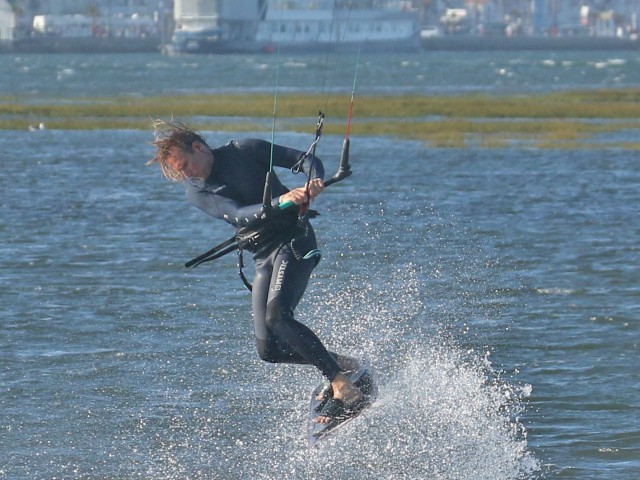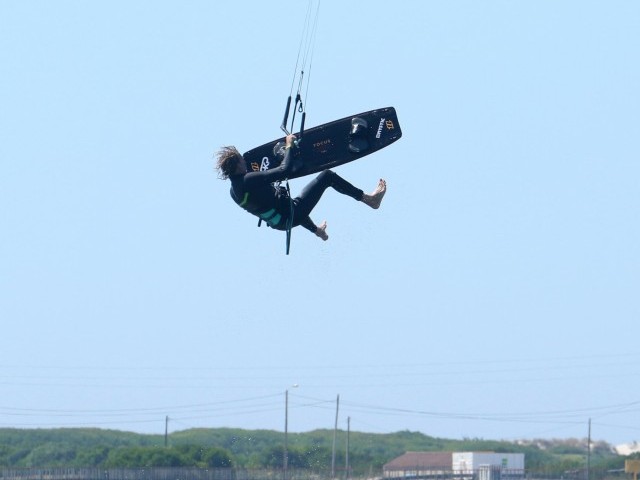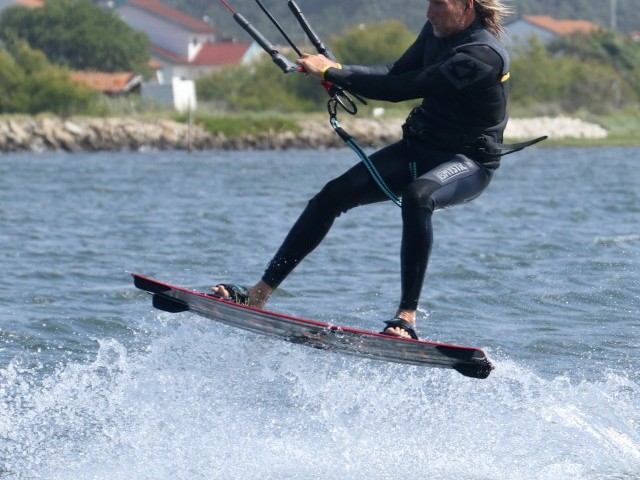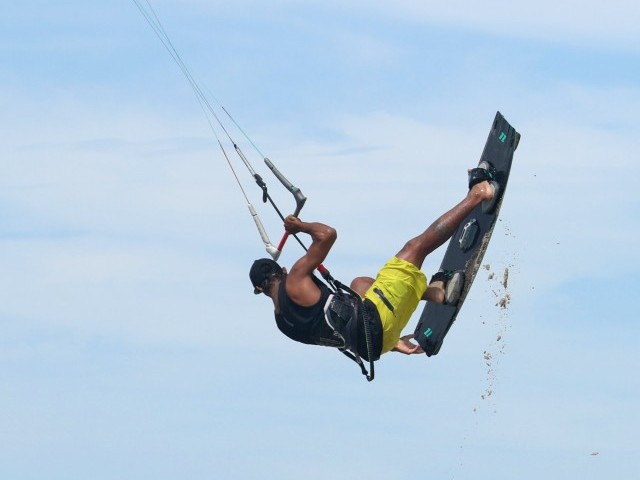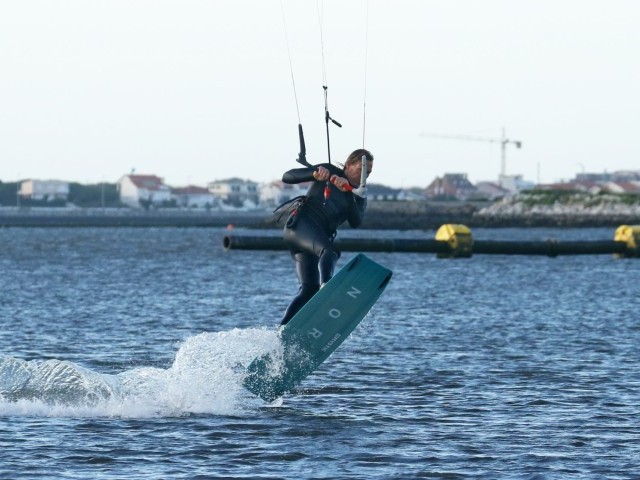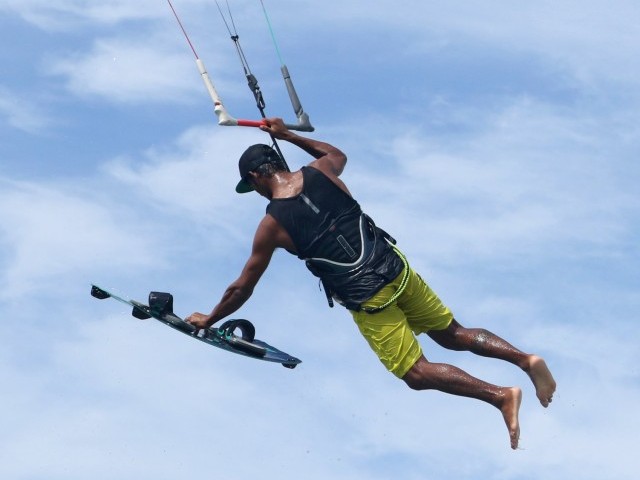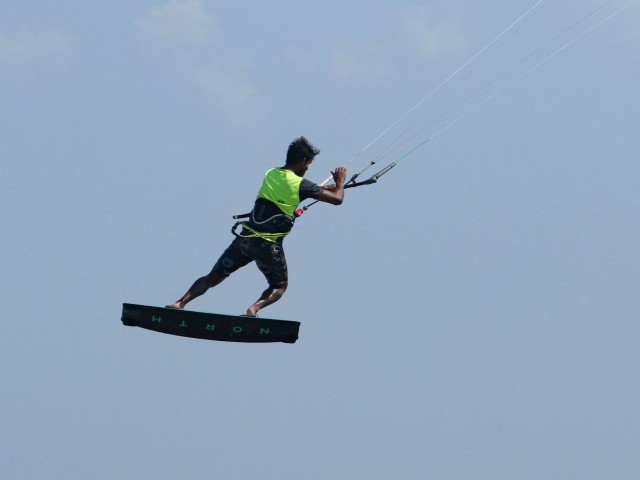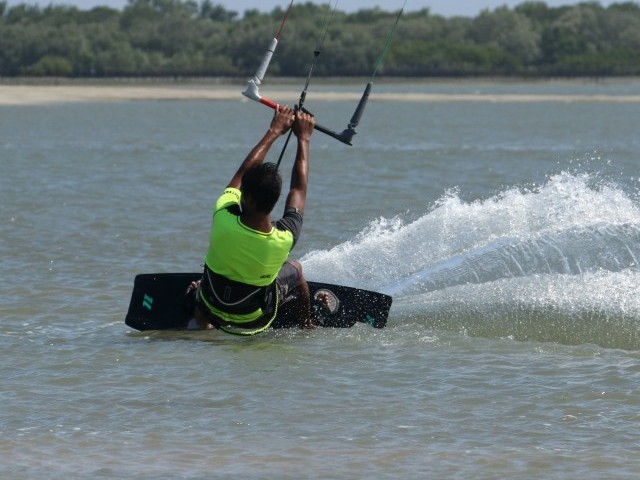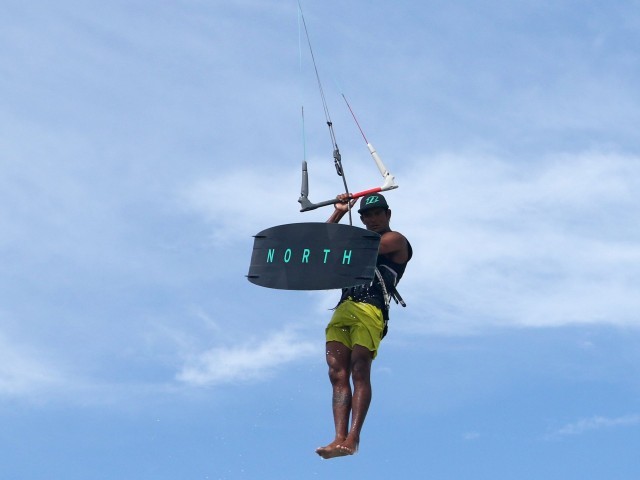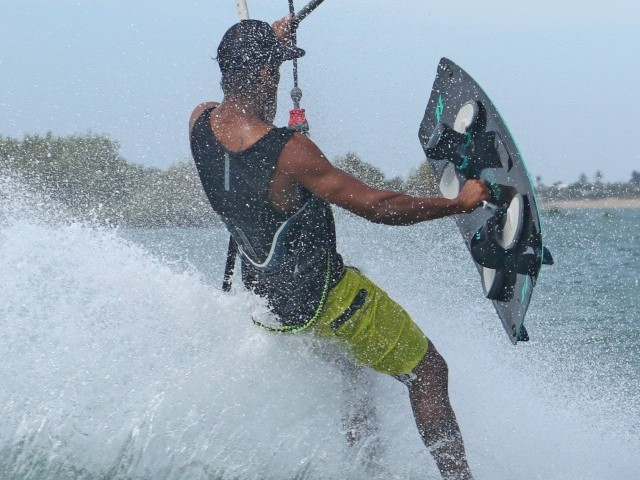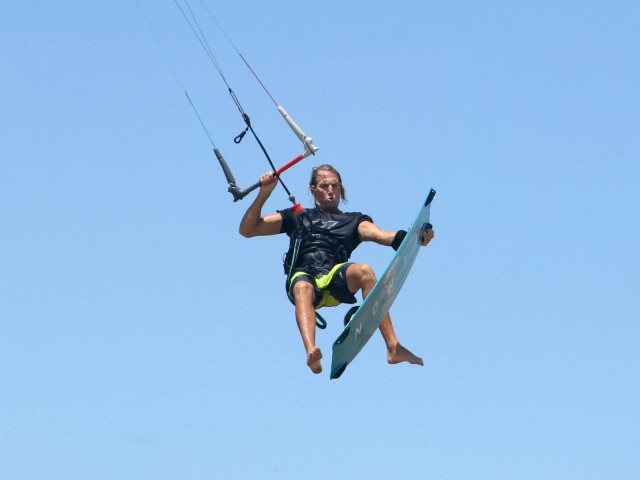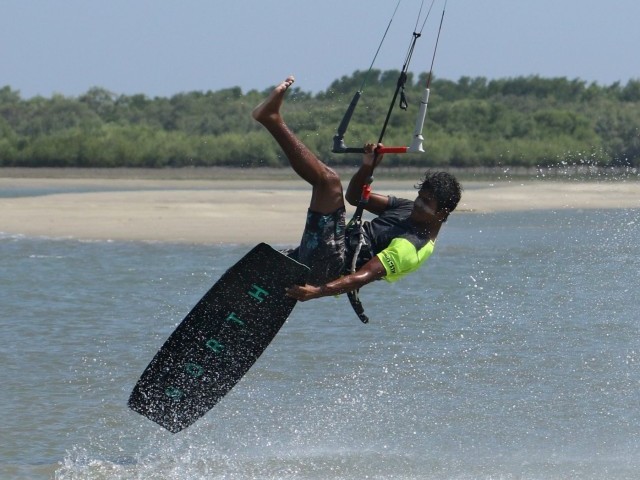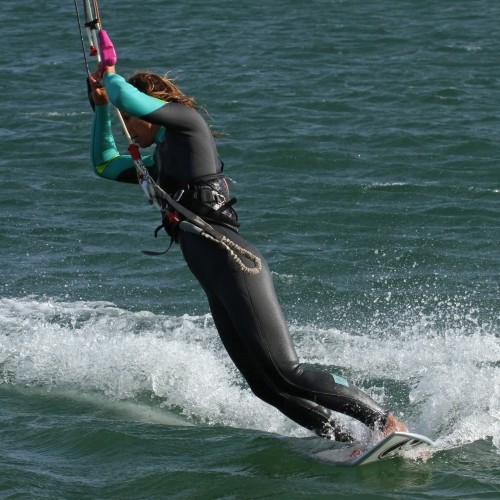
Surfboard Toeside Duck Tack
Technique / Advanced
Introduction
This no foot change duck tack variation is a fun, achievable challenge and a different way to change direction on a surfboard which will sit nicely in your box of tricks.
Have a quick look at the sequences and the videos to give yourself an idea of what you’ll be aiming for.
You’ll see that all you need to attempt this is a decent toe side and preferably some flat water. In essence all you are doing is carving upwind from toe side and continuing back the other way with no need to move your feet - magic! If you can tack it will be easier as you’ll already have the kite movements programmed in. As for kit set up you’ll either be wanting to use a kite with a lot of de-power throw, or trim your bar nice and close so that you’ll be able to dump the power and get under the bar.
The Approach
First thing to get sorted is your position on the board as this will have more than a helping hand in your quest for success. It’s really all about your feet and hips. You can see that Karine has her front foot near the centreline of the board, but biased towards the downwind side of the board - this is important for the final part of the move. However it is angled and facing forward quite a bit. Now look at her back foot, which is quite forward on the board, very much on the upwind side, almost on the rail, and it is also pointing forward. This foot position means that Karine, although toe side, is riding with her hips facing forward towards the nose of the board, almost as if she had her feet side by side. This will enable her to carve the board further up into wind.
As for the kite position it’s very much like the tack. As you approach you’ll want to get your kite quite high, so that it will be near 12 o’clock when you turn hard upwind. Then to make sure that you don’t overdo any movements you’ll also want your back hand in the middle of the bar, and you’ll need to take your front hand off the bar to help you carve and rail the board upwind.
The Carve
Your action of carving up against the kite needs to be precise and quick as you won’t be able to push it that last bit as you can when heel side. To get the board turning up tight Karine leans back onto a straight back leg and puts all her weight through her back foot. This aggressively turns the board sharply upwind. You can see that Karine still has her bar pushed away and the kite is at 12, so there is no resistance from the kite. With her back foot firmly on the rail Karine can apply plenty of pressure to turn the board. If at this point you find that your board is not turning enough, try moving your back foot slightly further back on the board.
Preparing for the Duck
This is the crux of the whole move, get this right and the rest will follow! Your aim is to get your body, shoulders and head around to the other side of your centre line/chicken loop. Assuming that you correctly positioned the kite at 12 o’clock, the board has turned sufficiently into the wind and you’ve sheeted the bar out you will have plenty of room to manoeuvre. The dynamics are based on moving your weight forward towards the nose of the board whilst standing up and getting your head around to the other side. To do this Karine get’s her free hand back on the bar and twists her hips towards the inside of the turn, thus literally rolling herself under and around the bar towards her front foot. By pulling in on the bar the kite helps lift Karine forward. If you come in with both your feet across the centreline and your hips too upwind you won’t be able to roll.
The Proper Duck
Here we can see in the process of ducking. With both hands on the bar Karine has moved her hips forward putting weight onto her front foot. At the same time she is leaning against the bar, pushing the bar back and herself forwards. You can see that the nose of the board is down now with Karine’s weight on it.
Support
Once you have the bar down wind of you you can pull on it for support. You will however need to be balanced over the board or else you’ll be falling in downwind. Karine is round and looking where she wants to go - don’t be tempted to “spin” around so that you’re looking downwind, you don’t want your feet to move, but rather your body and board in unison.
Sail Away
Then as soon as you can you need to get moving in the other direction. For this you’ll need to dive the kite hard and push the nose of the board off the wind and onto the new course. In the picture Karine has dived the kite with her new front hand and is prepared for the pull with her weight dropped slightly upwind of the board, knees soft and bum and body back. This is the moment when your front position really pays dividends. With her weight on the front foot and therefore the upwind rail, Karine has the board tilted towards her and can therefore push the nose off the wind as the power comes through. If her weight was too central or across the board the downwind rail would dig in, sink and tip Karine overboard.
Top Tips
This move really is about turning the board enough into wind so make sure you get the bar away and the kite up above you so that you can turn as far as possible.
You may have to experiment with foot position,as if your weight is too far forward you won’t be able to turn upwind, and if your weight is too bar back the board will wheely into the wind and stop abruptly. Some trial and error won’t go amiss.
Now have a good look at the Sequence 1, Sequence2 and the Videos for a full step by step guided tour.
Common Problems
The hardest part of this tack is turning the board sufficiently into wind. If you don’t go far enough the board will stop and you can’t complete he move. Your toe side position is crucial so that you can both carry enough speed in and turn the board enough, so make sure that your back foot is on the upwind rail and far enough forward. AND you must let the bar out when you carve up.
Your second hurdle will be getting your weight forward once you’ve turned the board. You need the kite to help you, and this is only possible if you have it above you at 12 o’clock. With the kite above you you can pull in on the bar to lift you onto your front foot.
Keystones
- Back foot forward and on rail
- Kite up to 12
- Push bar away,
- Carve hard against back foot
- Bar in & weight forward
This technique article was in Issue 45 of IKSURFMAG.
Related
By Christian and Karine
Christian and Karine have been working together as a coaching team, running improver to advanced kitesurfing clinics since 2003.






